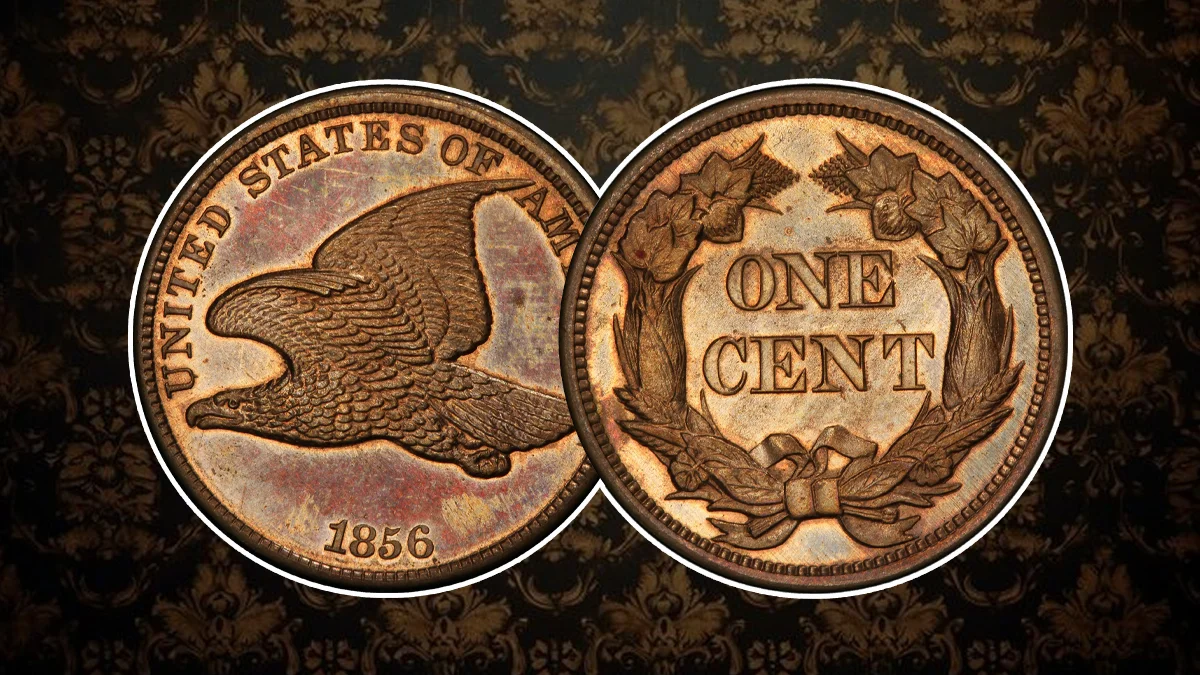
In American numismatics, the 1856 Flying Eagle Cent has a special position as a rare and valuable coin. The design became eligible for circulation in 1857, with the fact that it starts out just an original coin. The 1856 Flying Eagle Cent is highly valued now for its historical value, rarity, and aesthetic appeal as well as to its beauty. The article offers an extensive study of this numismatic valuables, analyzing the coin’s rich history, elaborate design, different types, rarity, condition, errors, and value.
History of 1856 Flying Eagle Cent
The year 1856 had an upgrade in the dollar’s value with the founding of the Flying Eagle Cent. The U.S. Mint wanted to introduce a more affordable, smaller currency that would replace the huge copper cents that had been in circulation since 1793. About 1,000 coins were produced at the end of 1856 to promote the Flying Eagle design to Congress and other important people.
This design had been selected for the new cent. These original pieces were used as an example of the new Little Cent’s chances rather than intended for a wider audience. Because of the success of this campaign, the Flying Eagle design was officially accepted in 1857, and the 1856 coins quickly acquired value as collector’s items.
Design
Obverse:
The obverse side of the 1856 Flying Eagle Cent shows a majestic eagle in flight, a design adapted from Christian Gobrecht’s silver dollars of 1836-1839. The eagle is described with outstretched wings, soaring across the coin’s surface, representing strength and freedom. The word “LIBERTY” is inscribed above the eagle, and also written with the date “1856” below.
Reverse:
The reverse of the coin shows a wreath of agricultural products, representing prosperity and growth. The wreath is almost similar to the design used on gold dollars and three-dollar gold coins of the years. It has a wreath with the words “ONE CENT.” The combination of these factors makes a design that is both smart and extended of America’s values at the time.
Types of the 1856 Flying Eagle Cent
There are many types of the 1856 Flying Eagle Cent, primarily determined by differences in the reverse design. Walter Breen, a mentioned numismatic historian, recognized four different reverse designs utilized on the 1856 Flying Eagle Cents. These variations, though modest, are of great interest to collectors and can influence the coin’s value.
- Original Strikes: These were the original coins to be struck in late 1856, having the idea of giving it away to press members, politicians, and other renowned individuals. Their Mint State conclude similar to what will ultimately be produced for common circulation, is what differentiates them.
- Restrikes: These coins, which were made between 1858 and the early 1860s, were produced using already present dies but were given a proof-like finish that allowed them to be recognized from the initial strikes. Since the 1856 Flying Eagle Cent became more and more common, it’s possible that the restrikes were made to meet collector demand.
Rarity and Condition
There were just 2,000 Flying Eagle Cents made in 1856, which makes it one of the rarest and most expensive coins in American numismatics. This includes the original strokes as well as the following restrikes. The coin is a valuable addition to any collection because to its historical value and rarity.
Since most of the original striking were provided for representatives and other lawmakers, coins in mint state condition are very rare. The frosty looks of these coins is typical of circulation hitting. On the other hand, the outsides of the restrikes generally have a highly reflective quality and a prooflike shine. It can be hard to determine the specific condition of an 1856 Flying Eagle Cent because many of these coins have experienced cleaning or other changes over time, which could have an influence on their value.
Errors
The 1856 Flying Eagle Cent originated with such small quantities and with such great care to every detail that errors are very uncommon. Still, there are still small variations in strike quality and die alignment, mainly within the restrikes. These small differences may raise the coin’s of value and uniqueness, which is how collectors regularly search for them.
Value of 1856 Flying Eagle Cent
An 1856 Flying Eagle Cent’s value could vary greatly based on its origin, condition, and strike type. Prices now range from $8,000 to more than $25,000 for examples that are in good condition. While restrikes are still important, they could be worth some less than original strikes in mint condition. Original struck usually attract the highest prices. Also in great demand are prooflike restrikes, especially those with striking looks and pristine surface.
Also Read – 1943 Bronze Lincoln Penny: A Comprehensive Guide for Coin Enthusiasts
Conclusion
The Flying Eagle Cent from 1856 is more than just a coin; it also represents a time in American history. Real collectors have to own it due to its rarity, historical value, and beautiful design. The 1856 Flying Eagle Cent offers a rare chance to buy a physical piece of history, whatever your experience level in numismatics. Collectors throughout the world continue to be fascinated and motivated by its amazing journey from an original coin to one of the most famous rarities of American coins.
